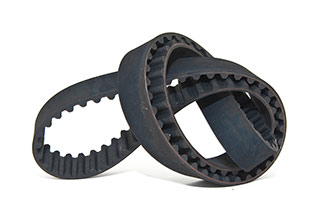Santee Timing Belt Replacement
Most manufacturers recommend a specific mileage for timing belt replacement and we suggest our customers follow those guidelines. If the timing belt is not replaced at the suggested interval, the belt could break, leaving you stranded and possibly causing major engine damage. If you’re having the timing belt replaced, consider replacing other parts that may be accessed at the same time. The water pump, timing belt sprockets and tensioning pulleys are good examples. Please give us a call if you have questions about your car’s needs for timing belt service.
Purpose of Timing Belt Replacement
The timing belt maintains crankshaft-to-camshaft synchronization, keeping valve operation matched to piston position. On some engines, the belt also drives other components. These include the oil pump, water pump, and balance shafts.

Many of today’s engines use timing belts, but not all. Some engines use a timing chain and sprocket arrangement. A timing belt is a precision component with teeth that mesh exactly with its mating sprockets. Especially critical is uniformity of the teeth and their spacing. The belt’s teeth are precision molded from a special rubber compound for good mesh and long life. The belt’s inherent tensile (stretch-resistant) qualities come from high strength cords that run parallel with the direction of belt travel.
How important is it to replace the timing belt?
Very important. Ignoring your timing belt service can leave you stranded and cause major engine failure.
Do I need to replace my water pump as well?
If your car’s water pump is driven by the timing belt, you will want to replace both at the same time. This will save you a significant cost in labor because it often takes some time just to open up that part of the engine (if you did them separately, you may pay this labor cost twice).